Challah: Beautiful Braided Bread, With Temperature Tips
When I was working as a cheese monger at a local grocery store that had an artisan baking program, I was delighted when they introduced Challah as a weekly specialty bread. Every Friday was a challah-day, and I ate a lot of rich, sweet bread for the rest of my time in that position.
Though challah (pronounced HA-lah) has its origins as a special bread for celebrations within Jewish culture, it’s firm, rich, buttery texture and shiny braided crust have made it a favorite in the culture at large. If you haven’t tasted it as French Toast, you’re in for a real treat. And It is also incredible as regular toast, for sandwiches, or just for snacking on by the slice with or without butter and jam.
Here, we’ll tell you how it’s made, give a pattern for braiding it into that gorgeous shape, and help you with the temp tips you’ll need along the way.
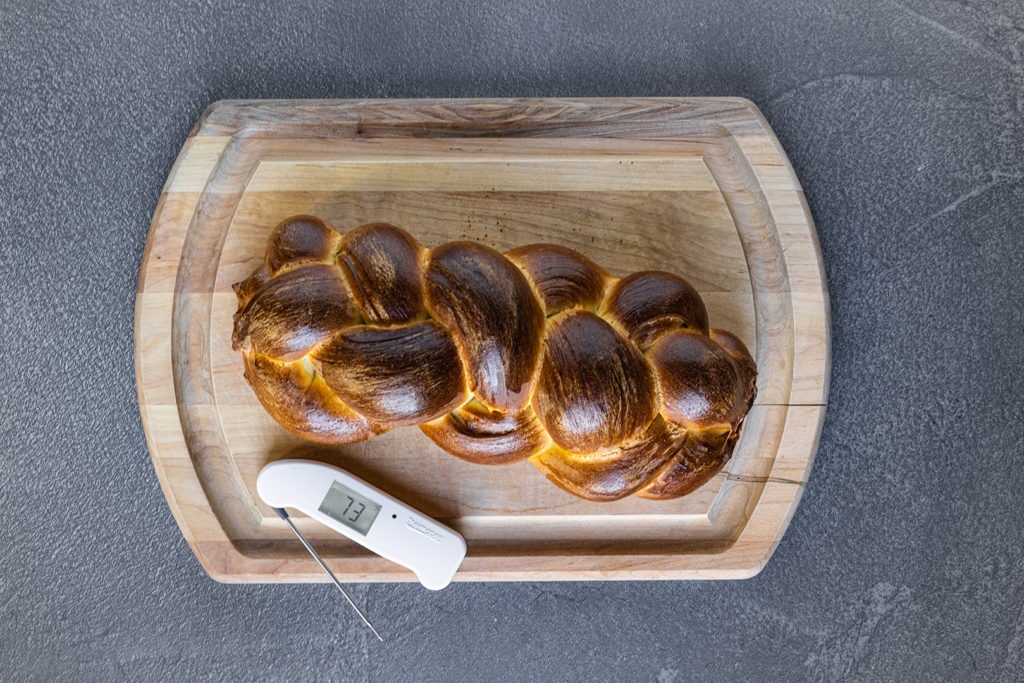
What is challah?
Challah is a rich-dough bread that is pareve according to the rules of kashrut, which means that it contains neither milk nor meat derivatives. This means it can be eaten with any kind of meal without breaking the kosher dietary laws. It has no butter in it, no milk—one of the key facts that separates it from “traditional” brioche.
Instead, it is made with vegetable oil for enrichment as well as sugar, eggs, and egg yolks. This combination gives the challah a tenderness and richness that is so unique and delicious. (Rose Levy Beranbaum says that challah is a brioche, and I think the Modernist Bread team would agree. Brioche is basically high-fat bread. In this case, the fat comes from oil and the abundance of egg yolks.)
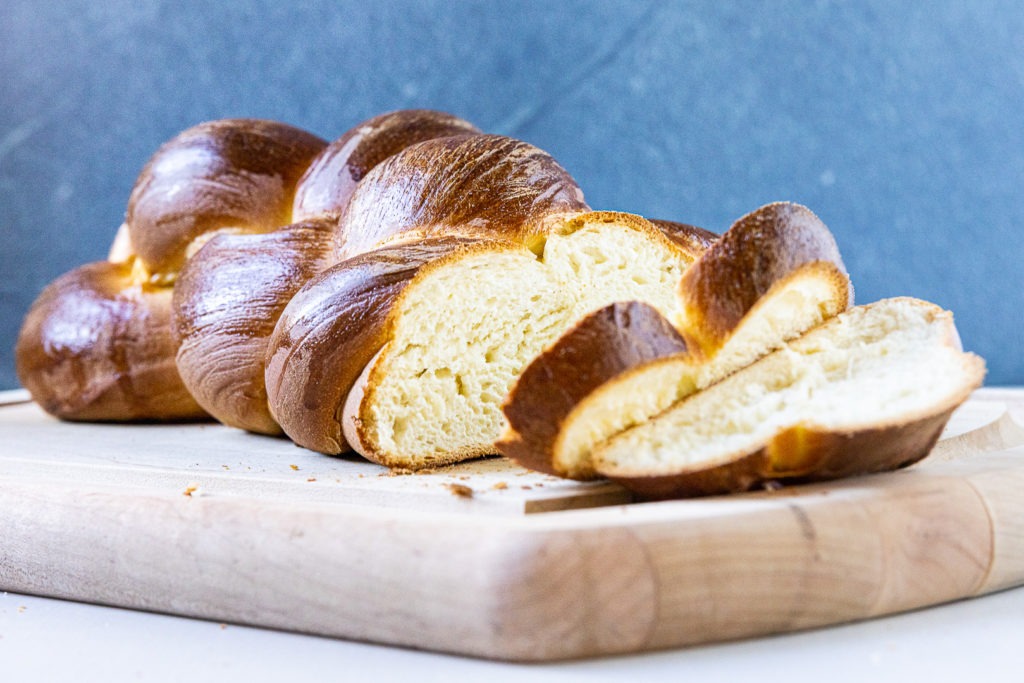
Challah is traditionally sprinkled with sesame or poppy seeds before baking, but I’ve seen it with crystal sugar on top, as well as some beautiful examples with sprigs of fresh oregano or other herbs half-woven into the bread. Tradition is important, but let your mind wander a little when it comes to topping your loaf. I once used crushed cinnamon graham crackers to great effect. Try the base recipe first, then start trying new things.
Making challah
This recipe, adapted from America’s Test Kitchen, uses a cooked paste of flour and water to make the loaf moist but not sticky, a method called tangzhong that is borrowed from Japanese baking. There is not one traditional recipe for challah, so differences in method that all end in the same place are hardly a divergence from tradition. Some recipes call for a sponge, others just mix the ingredients.[/footnote] By pre-gelatinizing some of the starches in a portion of the flour, you make the dough easier to work with and you also get a more pillowy, soft result.
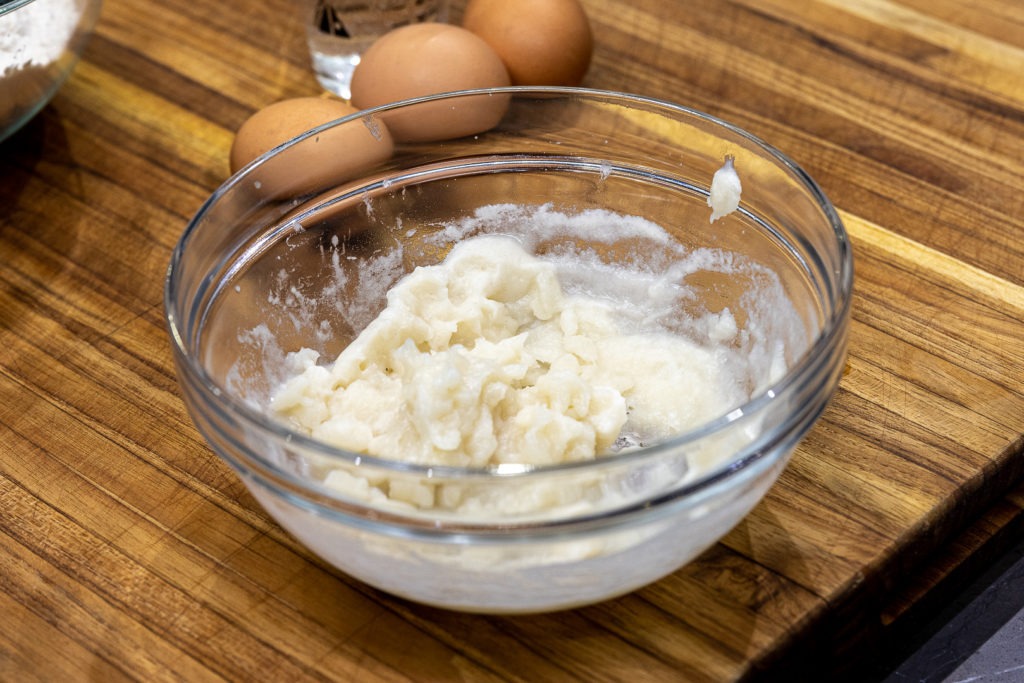
To get maximal dough hydration, there is even a hydration-break built into the recipe. The flour is added to the liquids (the paste, the oil, the eggs, and the water), mixed, and allowed to rest for 20 minutes. During this time there is some enzymatic action in addition to the hydration that occurs, improving the dough structure. Only once that has finished do we add the sugar and salt and finish the kneading.
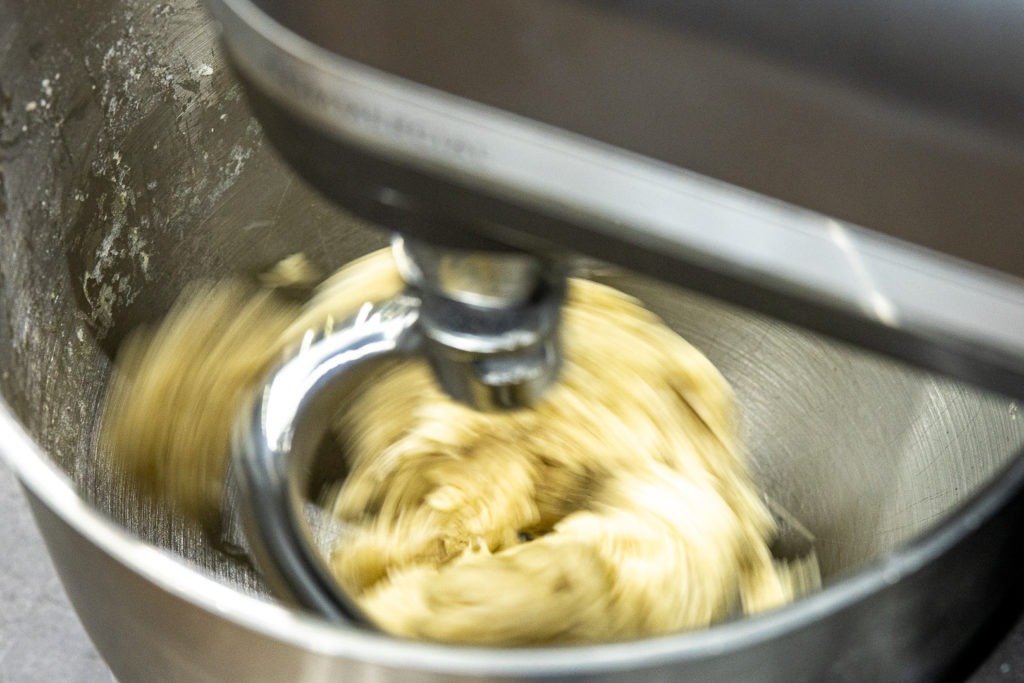
There is, of course, an initial bulk-ferment step that should be performed at 85°F (29°C) until the volume of dough basically doubles. Then it is braided—more on that in a minute—and proofed again, also at 85°F (29°C).
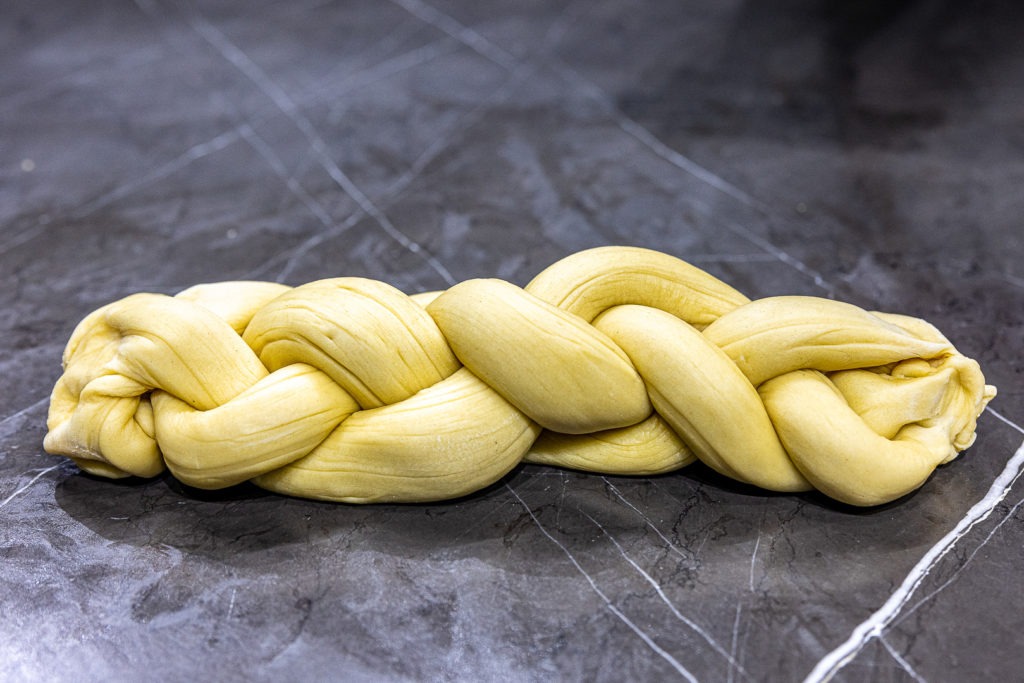
Once the dough has been shaped and proofed, we give it an egg wash to make it shine and then bake it to a pull temp of 195–200°F (91–93°C). Set a timer for 35 minutes when you put the bread in the oven and check the internal temperature with your Thermapen® ONE when the timer sounds. If you find any temperatures lower than your target in the bread, continue cooking for a few minutes and check again.
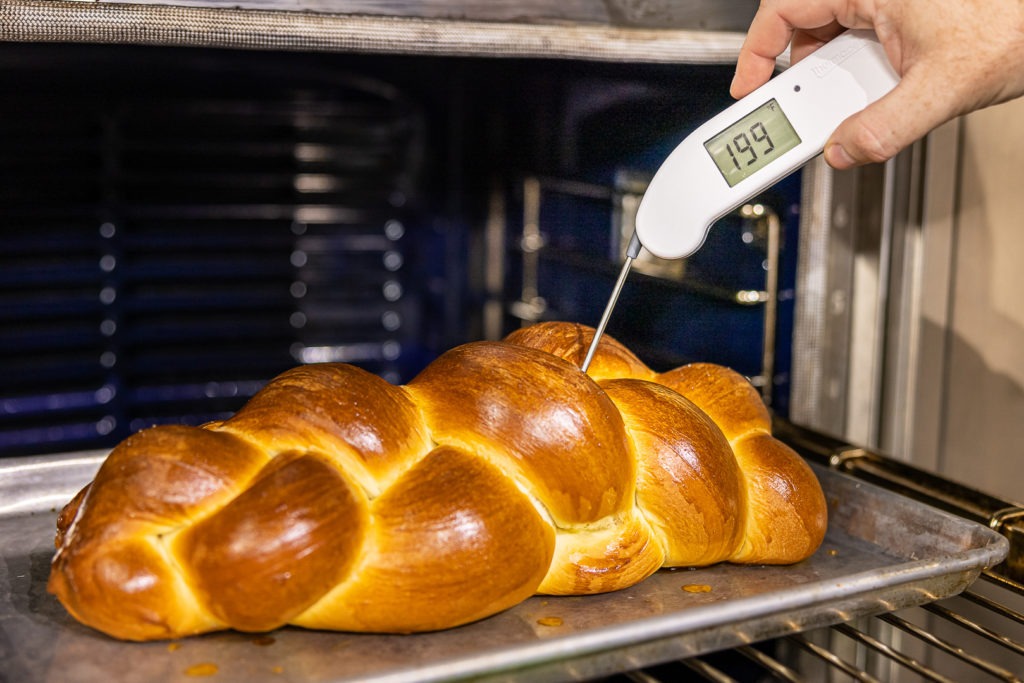
Braiding a four-strand challah
If you want to see some amazing breads, start looking through YouTube or Instagram at braided challah. People go crazy, and the results are magnificent. I’m not here to teach you that. I’m here to help you get a solid, basic, four-strand challah braid going.
There are many ways to do this, but I found this method the easiest to understand and to do. First, cut the dough into four equal portions, then roll those out into snakes about 14 inches long. Pinch one end of all the strands together so that they are all connected at one point. Put that connection point away from you, so the rays of dough are shining towards you.
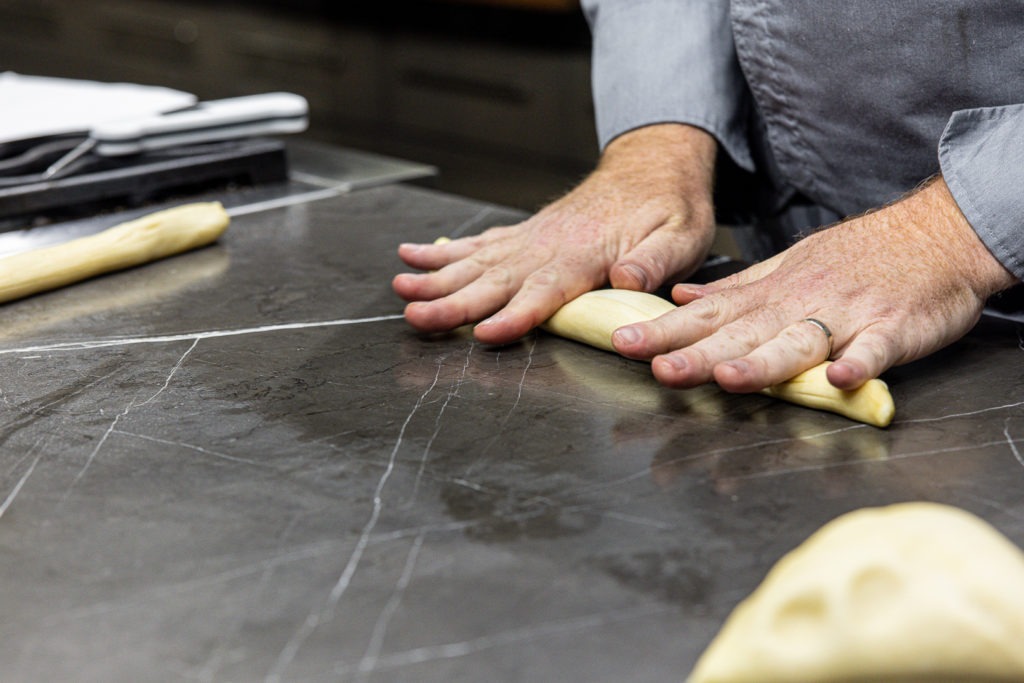
Now, here’s the important bit. You need to label the positions of the strands. Each strand will move and when it moves it will get the name of the new position it takes. We don’t have to keep track of the original position of any strand.
Ok. Position one is on the left, then position two, then three, then four on the right. Here we go.
- Lift the strand in position four and cross it over the strand in position two. (It now becomes position two.)
- Move the strand in position one over the strand in position three.
- Move the strand in position two over the strand in position three.
- Repeat until the whole thing is braided.
That’s it. 4 over 2, 1 over 3, 2 over 3 // 4 over 2, 1 over 3, 2 over 3…
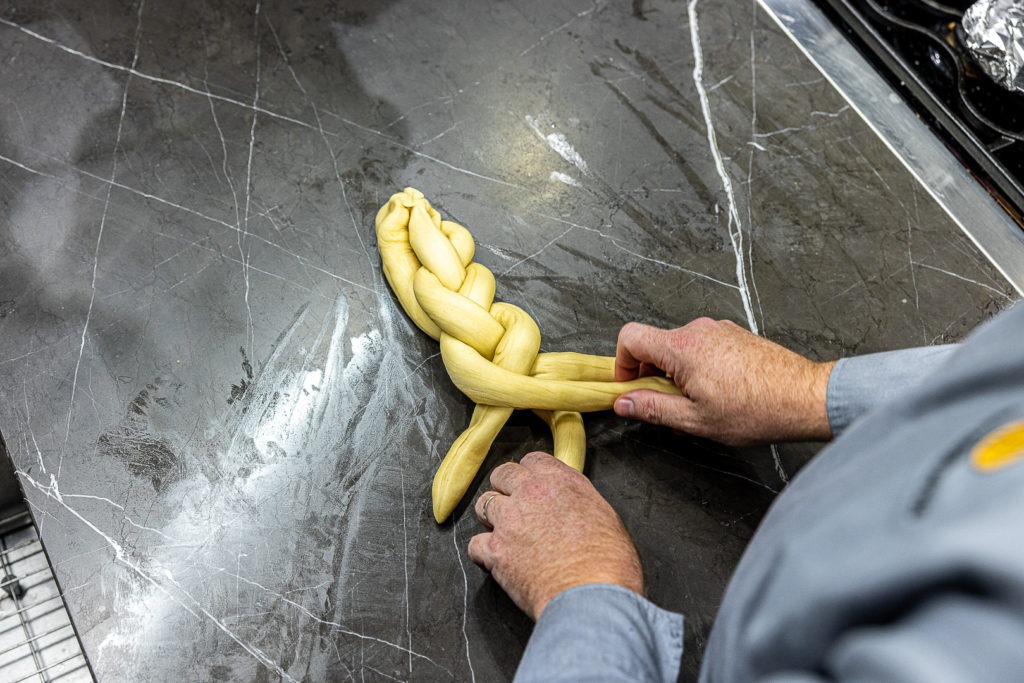
When you run out of dough, pinch the strands together and tuck the joint under the loaf. You did it!
Challah is a wonderful bread that looks intimidating but is, in fact, not very hard to make. Make it a regular part of your week or make it only for special occasions. Or why not make it every week and make that part of your week the special occasion? Either way, make sure you proof it properly and be especially sure that you cook it to the correct pull temperature. Give it a go. You’ll love the result, whether you keep kosher or not.
Print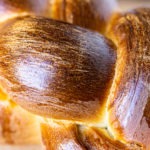
Simple Challah Recipe, with braiding instructions
Description
Rich, sweet challah recipe, adapted from Cook’s Illustrated.
Ingredients
For the tangzhong paste
- ½ C water
- 3 Tbsp bread flour
Dough
- 1 large egg plus 2 large yolks
- ¼ C water
- 2 Tbsp vegetable oil
- 2 ¾ C (15⅛ oz) bread flour
- 1 ¼ tsp instant yeast
- ¼ C (1¾ oz) sugar
- 1 tsp table salt
- 1 Tbsp sesame or poppy seeds, optional
Egg Wash
- 1 large egg
- Pinch salt
Instructions
Make the dough
- Stir together the ingredients for the paste in a microwave-safe bowl until there are no lumps.
- Cook the paste mixture in the microwave in 20-second intervals, whisking between cooks, until the mixture is thick, like slightly-stiff cream of wheat or pudding.
- In the bowl of a stand mixer, whisk together the oil, egg, egg yolks, flour paste, and remaining water.
- Change the mixer attachment out for the dough hook.
- Add the remaining flour and the yeast. Mix together until all the flour is moistened.
- Let the dough sit, covered, for 20 minutes to hydrate and autolyze. (Use a timer to keep track of the time.)
- Add the sugar and salt and knead the dough for nine minutes at medium speed.
- Remove the dough and grease the inside of the bowl with oil or nonstick spray. Put the dough back in, cover the bowl, and let the dough rise at 85°F (29°C) until doubled in volume, about 90 minutes.
Braid the bread
- Turn the bread out on a countertop. Do not flour the countertop! You need the friction of the bare counter to help keep the strands in place while braiding.
- Divide the dough into four equal parts and roll them all out into strands about 14–16 inches long.
- Pinch all four strands together at one end and number the positions, 1–4.
- Cross strand 4 over strand 2.
- Cross strand 1 over strand 3.
- Cross strand 2 over strand 3.
- Repeat the pattern until you run out of dough. Pinch the strands together and tuck them under the loaf.
- Place the loaf on a parchment-lined baking sheet and cover it loosely with plastic wrap that has been oiled on the contact side.
- Set the loaf aside to proof in a place that is as close to 85°F (29°C) as possible.
- Allow the loaf to rise until it no longer springs back easily or fully when poked, about 2–3 hours.
Bake
- When the bread is done proofing, or nearly so, preheat your oven to 350°F (177°C).
- Make the egg wash by beating together the egg, the pinch of salt, and a teaspoon of water.
- Brush the egg wash onto the surface of the loaf. If you are using the sesame or poppy seeds, sprinkle them on now.
- Place the loaf in the oven and bake.
- After 35 minutes of baking, check the internal temperature of the loaf with your Thermapen ONE. If the lowest temp you see is 195–200°F (91–93°C), the bread is done.
- Let the bread cool before slicing, then serve and enjoy!
Shop now for products used in this post:


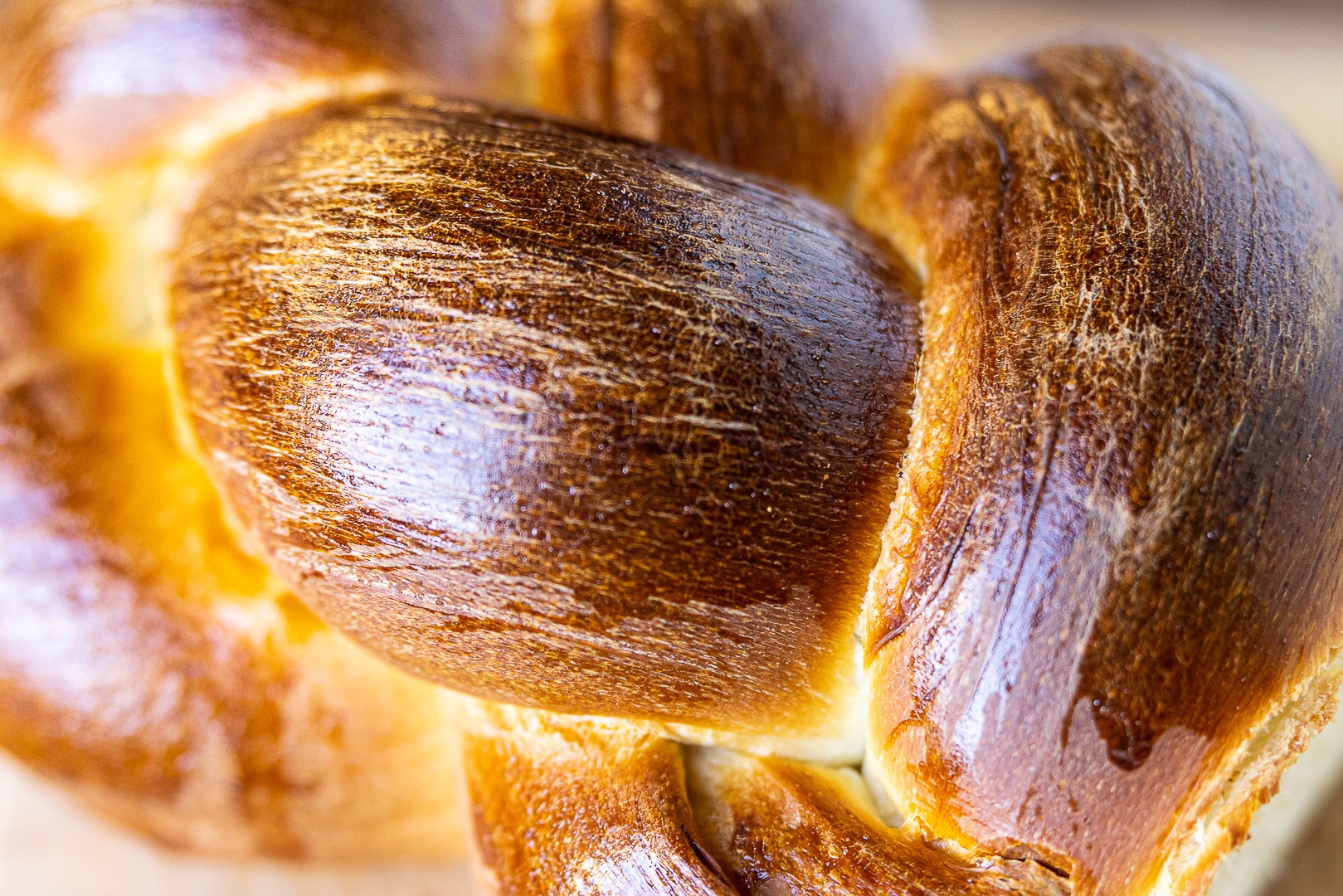
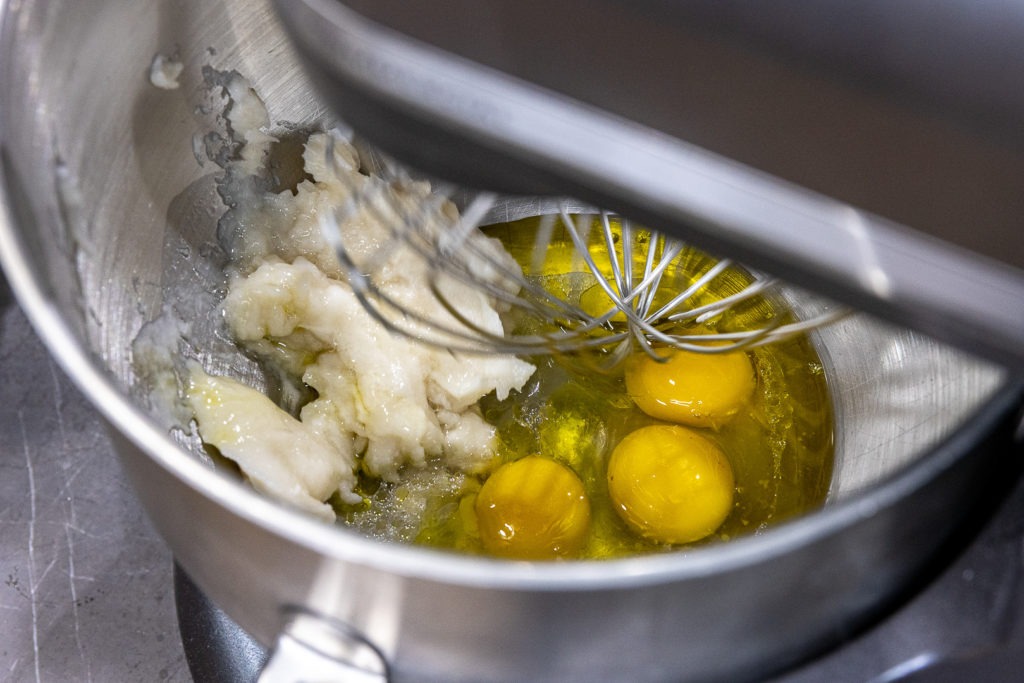
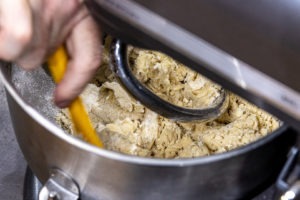
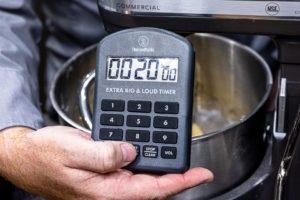
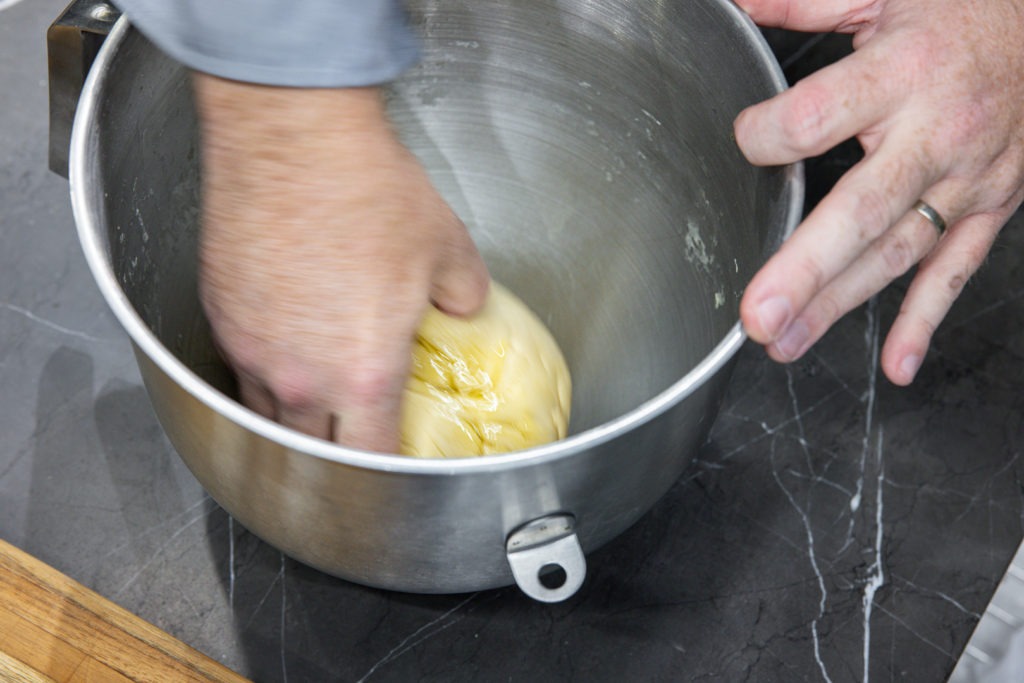
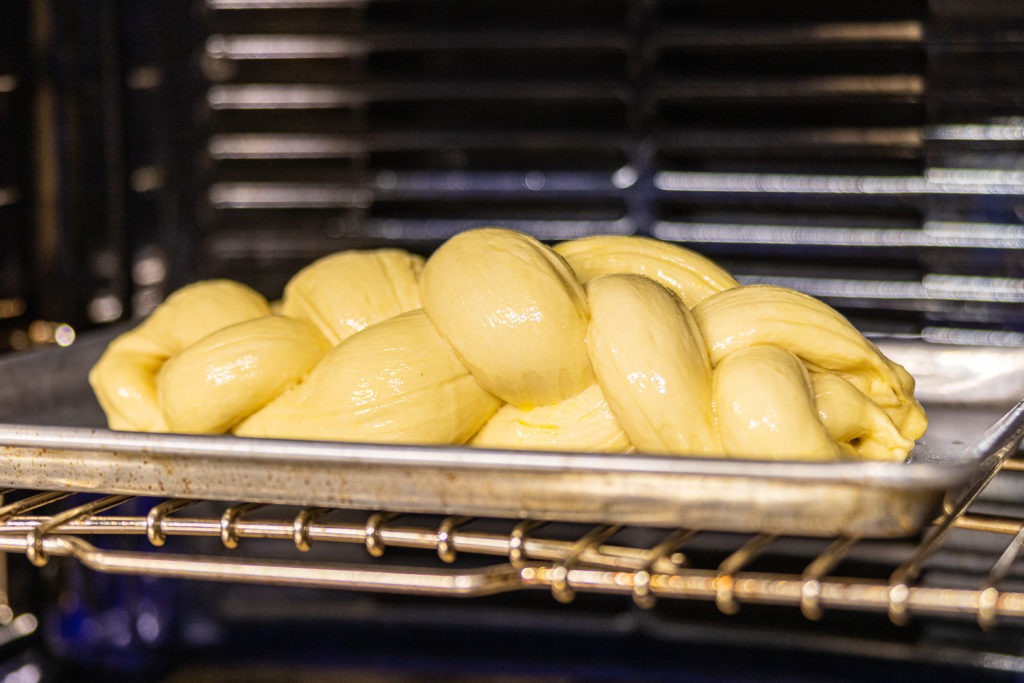
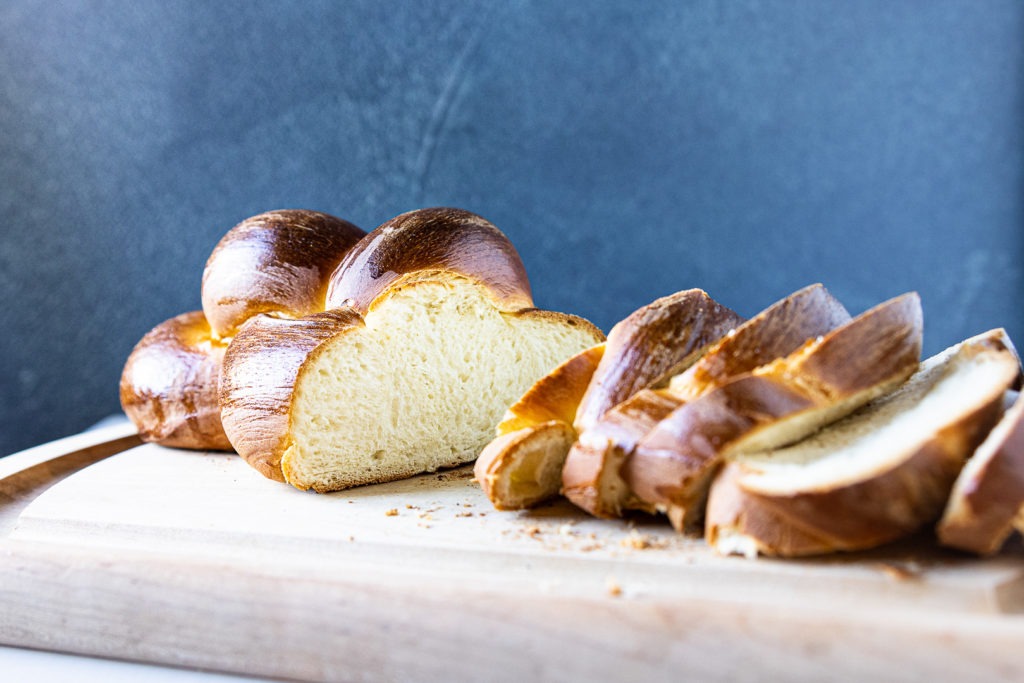

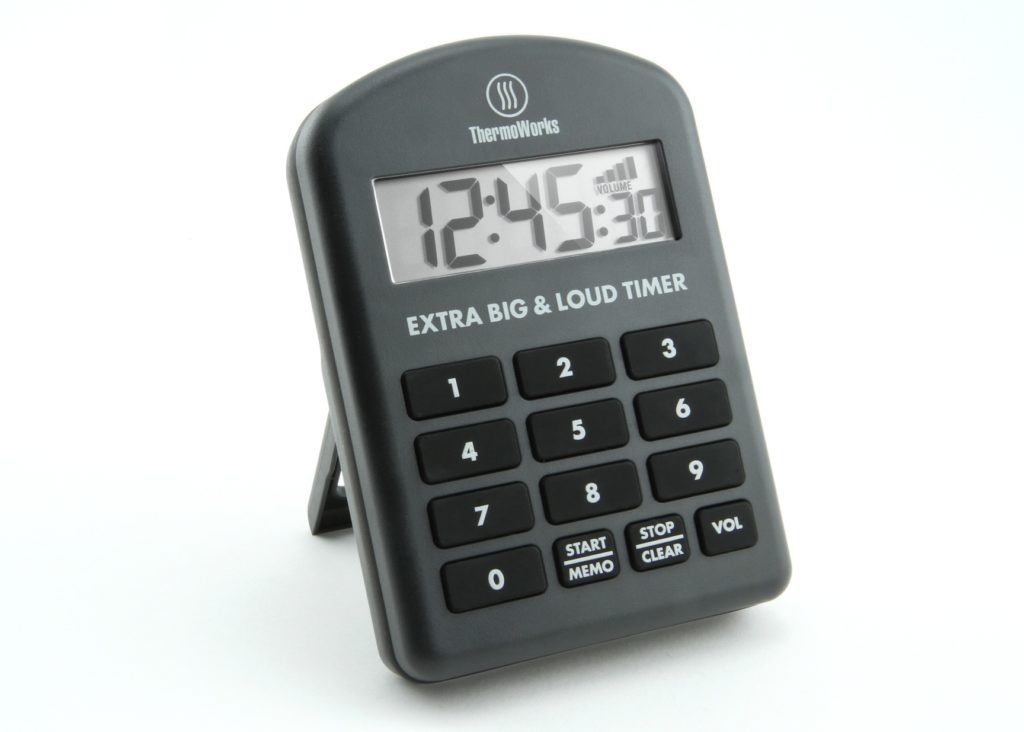
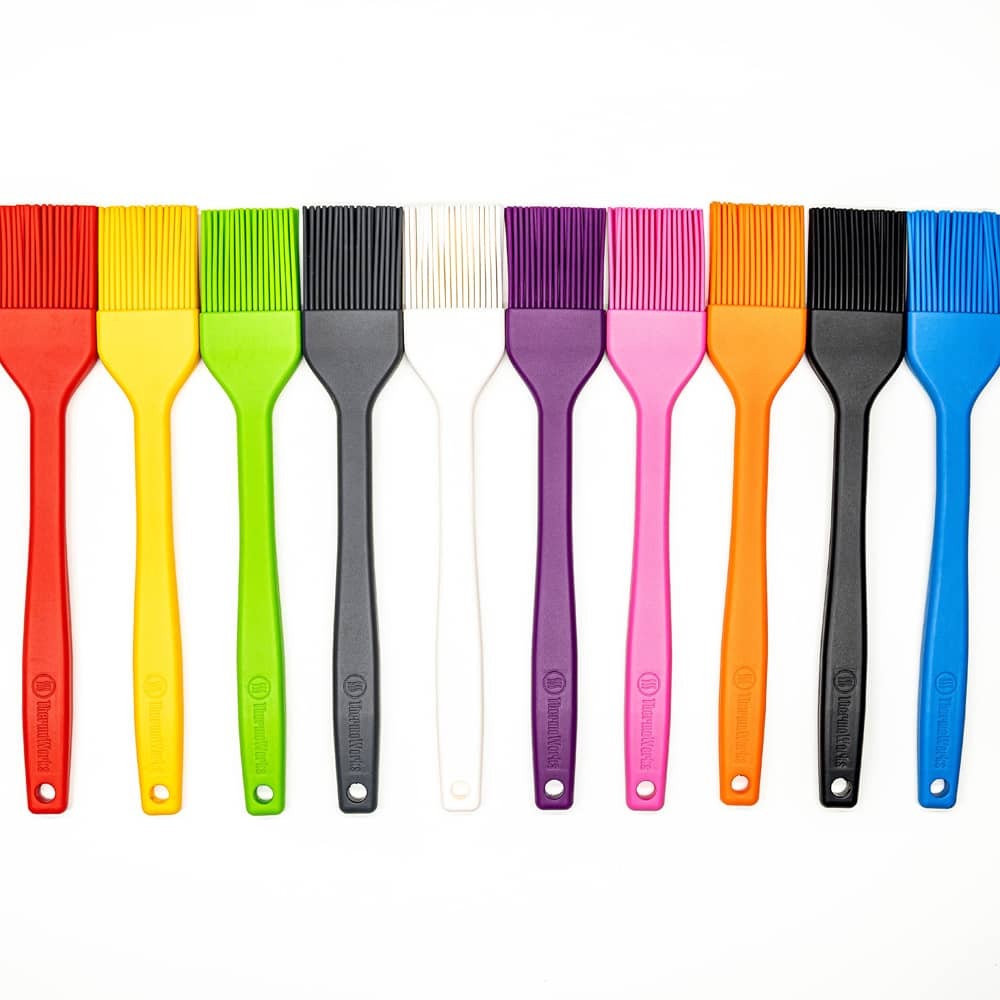
I tried the recipe and it’s really good. Thanks for the recipe. I will look into other recipes as well.
ATK also has a 6-strand braid technique that looks like an 8 strand loaf. Basically divide the dough in two parts, 1/3and 2/3. Braid each in a regular 3 strand braid and lay the small braid on top of the big one before baking. Trompe d’œil.
Great recipe !
Best challah recipe I’ve tried yet, thanks.
Have you considered listing all ingredients
in grams with the exception of egg. I added 30 g more water in autolyse step based on intuition and it turned out great. Lots of variation in other measures
Good tip! Glad you liked the bread!
I don’t have a microwave. How else can I make the tangzhong paste?
You can make it in a pot on the stove, just gently cook it together there.